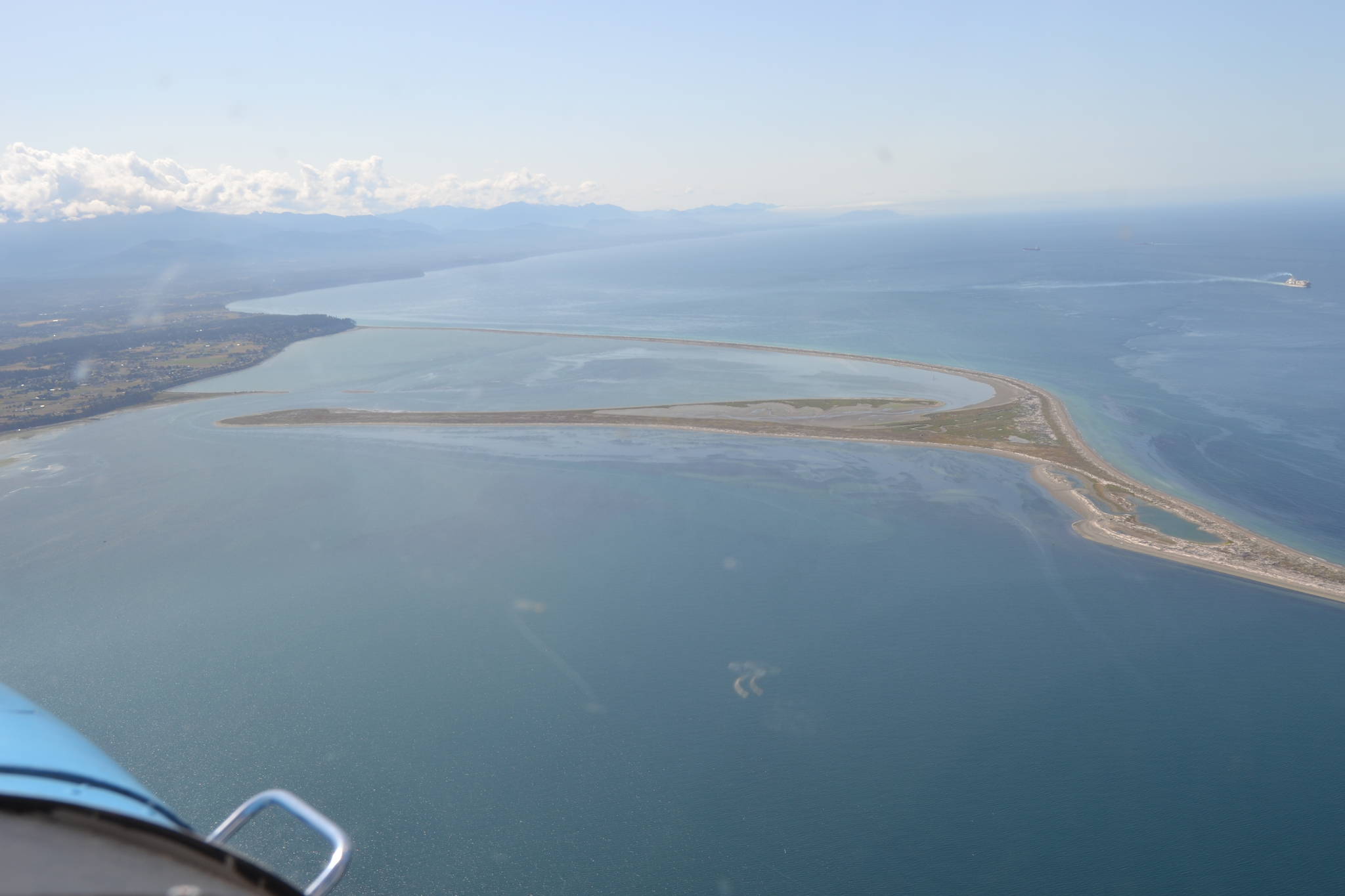The first portion of a three-phase oyster farm planned by the Jamestown S’Klallam Tribe within the Dungeness National Wildlife Refuge received approval from the county’s hearing examiner last week after years of analysis and discussion.
Notice went out on Thursday, Feb. 6, that Clallam County Hearing Examiner Andrew Reeves approved the project’s first phase: five acres of on-bottom bag oyster cultivation with up to 4,000 bags per acre.
The project also includes staff spreading oysters on the beach and harvesting them by hand.
Before the tribe can increase its farm to 10 acres of oysters in phase 2, and up to 20 acres in phase 3, they must analyze their farm’s impact on the area.
“There is insufficient current data, however, to fully assess long-term impacts from this type of operation, especially in relation to the Refuge,” Reeves wrote in his decision.
He said that the hearing would reopen prior to phase 2’s expansion “to evaluate phase 1 impacts on the environment with particular emphasis on determining whether detrimental impacts have occurred to the refuge in conjunction with phase 1, whether additional conditions are necessary, and whether it is appropriate to approve additional phases of the approval.”
Reeves made his original decision on the project on Jan. 10, but Clallam County’s Department of Community Development staff on Jan. 21 filed an asked for reconsideration about a condition regarding wildlife monitoring.
In county staff’s appeal, they wanted tribal staff to offer a solution for if they, the Olympic Peninsula Audubon Society, and U.S. Fish and Wildlife Service couldn’t agree on terms for a Memorandum of Understanding (MOU) related to monitoring shorebirds and waterfowl.
Reeves agreed to the change on Feb. 6, mandating the tribe enter an MOU with the entities; if they cannot come to an agreement on the scientific process, the Department of Community Development staff would select a third-party for monitoring with expenses falling to the tribe.
As part of his conditions, Reeves took note of the public’s concern from the farm on the National Wildlife Refuge, and the potential for introducing plastics into the marine environment.
“After public testimony on plastics, the hearing examiner is left with the impression that more site-specific research would be beneficial, both for this specific project and for all aquaculture projects throughout the state … ” he noted.
Reeves’ approval authorizes a Conditional Use Permit and a Shoreline Substantial Development for the tribe. After approval at the county level, the tribe must obtain numerous permits and licenses from multiple state and federal agencies.
They also must submit an annual monitoring report of the eelgrass areas to the county and conduct twice-annual beach cleanups of marine debris along Dungeness Spit, Graveyard Spit and Cline Spit.
Liz Tobin, Jamestown’s shellfish biologist/representative for the Dungeness Oyster Farm project, said the tribe feels “the hearing examiner’s decision was a rational one.
“It sets the standard for what (Department of Ecology and Army Corps of Engineers) will move forward with their decisions,” she said. “We’re feeling optimistic.”
Tobin said Clallam County staff sent application materials to the Department of Ecology on Feb. 11, and that there is no timeline yet for when permits and licenses will come through.
Farm history
Oyster farming south of the Dungeness Spit dates to at least 1953, county and tribal officials report, with the tribe leasing and operating a farm from 1990-2005 until it was de-certified because of contamination in the bay.
The reestablished oyster farm would be located in the bay about 4,000 feet north of Cline Spit on leased tideland from the Department of Natural Resources.
County staff suggested during the comment period that Reeves deny the application because it “would not be consistent with the natural shoreline environment and would negatively impact wildlife at the Refuge.”
According to county records, county senior planner Greg Ballard testified that the shoreline environment should be relatively free of human activity.
Tribal officials responded on record that the area was downgraded by the Department of Health because of a decline in water quality, and that there were no documented adverse effects in the 50-plus years oyster farming was active.
Reeves wrote that the fact the tribe would be resuming commercial oyster farming “cannot be stressed enough.
“Were the applicant proposing a new activity or a new location for this activity within the natural environment, denial would be mandated, given the policies that govern the Natural shoreline environment.”
County staff said oyster farming was not a preexisting, nonconforming use, Reeves wrote, but the Department of Ecology (in WAC 173-27-080(3)(C) states the use shouldn’t be discontinued when inactive due to dormancy.
“Evidence in the record clearly establishes that the on-bottom methods proposed would have fewer impacts, especially aesthetically, than the longline cultivation method the application previously employed on-site,” Reeves wrote.
The planned oyster farm would deploy plastic black mesh bags anchored to the substrate with each bag measuring about 2 feet wide by 3 feet long, at about 10 feet apart between rows.
Tribal officials state they moved on from their previous method of longline culturing, a process that sees oysters grown on clusters of rope lines.
On Dec. 11, 2018, the tribe revised its proposal to include three phases along with a “Monitoring and Mitigation Plan” that includes efforts such as keeping shellfish activities at least 25 feet from native eelgrass.
Tobin said they proposed phases because they knew there’d be concerns and it was reasonable for Reeves to approve phase 1 to start.
“We’re happy to have the opportunity to move forward,” she said.
Reach Matthew Nash at mnash@sequimgazette.com.


